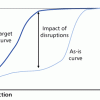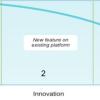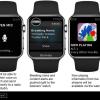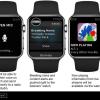Strategic advice to leverage new technologies
Technology is at the heart of nearly every enterprise, enabling new business models and strategies, and serving as the catalyst to industry convergence. Leveraging the right technology can improve business outcomes, providing intelligence and insights that help you make more informed and accurate decisions. From finding patterns in data through data science, to curating relevant insights with data analytics, to the predictive abilities and innumerable applications of AI, to solving challenging business problems with ML, NLP, and knowledge graphs, technology has brought decision-making to a more intelligent level. Keep pace with the technology trends, opportunities, applications, and real-world use cases that will move your organization closer to its transformation and business goals.
Recently Published
In this article, we focus on the difficulties posed by small series production in ramp-up and a novel production control solution that is helping to alleviate them. The risks of such production are not comparable to big series automotive ramp-up scenarios. Production and control strategies thus need to be adapted accordingly.
The Project Congestion
There is an organizational pattern I find that is frequently the root cause for problems in many organizations. I call this pattern the "project congestion," and it is regularly found in product organizations that have several dozen to several thousand members. A standard way to keep the finances of these organizations in control is to set up projects of one or more years that are supplied with a certain budget and work toward some business goal.
In this issue, we investigate how production management can benefit from embracing recent developments in ICT by providing insights into the practical use of these technologies from industry experts and researchers.
The Gremlins of Mobile Data
As mobile apps become increasingly sophisticated and important, they are changing the ways in which people interact with the IT environment. Mobile apps are accessed differently than is desktop software in that mobile apps are always available and become an immediate part of personal interactions. As they are used for social purposes -- for scheduling and meetings, to access travel details, and to perform innumerable mundane functions that coincide with the needs of ordinary life -- mobile apps leave a rich trail of data that can be exploited, for better or for worse, by companies wishing to enhance their marketing efforts. But these data streams also provide extraordinarily rich pickings for nefarious purposes. Added to this risk is the growing use of business apps that connect to corporate systems and data, creating an increasing security threat across a wide range of vectors.
In the previous Advisors in this series, we pointed out that development can be sorted out into three classes (see Figure 1):
- Bug fixes and small changes
- New features for existing applications or platforms
- New applications and platforms
Figure 1 -- The three types of development efforts.
Connected devices are set to dramatically change healthcare in general and clinical and pharmaceutical studies and the treatment of chronic diseases, in particular. The key to utilizing sensor data generated by personal health, fitness, and medical devices is to correlate it with other more traditional healthcare and medical data -- such as doctor-created medical records, clinical research, and individual genomes -- data sets that are typically unstructured, fragmented, and not easily integrated or analyzed.
The Apple Watch is significant because it legitimizes the market for wearables (in general) and smart watches (in particular) by dramatically increasing the visibility of smart watches. (Smart watches are wearables designed to run 3rd-party apps; general wearables are fitness bands, activity trackers, and the like, that do not run third-party apps.) It is also leading to a wave of innovative new products -- including apps designed to work with the Apple Watch, as well as new smart watch offerings from other vendors that have been inspired by Apple's innovation. And, perhaps most importantly, the proliferation of smart watch users will offer companies a new and very dynamic touchpoint for engaging with customers.
The Apple Watch is the biggest announcement in wearable tech this year. And, in just a few days (24 April), it will start to appear on the wrists of large numbers of consumers.














